How to Access the STM32G071RBT6 Datasheet from STMicroelectronics
128KB 128K x 8 FLASH ARM® Cortex®-M0+ 32-Bit Microcontroller STM32G0 Series STM32G071 3V 64-LQFP









128KB 128K x 8 FLASH ARM® Cortex®-M0+ 32-Bit Microcontroller STM32G0 Series STM32G071 3V 64-LQFP
Access STM32G071RBT6 datasheets easily with step-by-step guidance on navigating the STMicroelectronics website to find accurate technical documentation.
Product Introduction
Accessing the datasheet of the STM32G071RBT6 microcontroller may seem daunting, but the process is straightforward. The official STMicroelectronics website provides a reliable platform to find detailed technical documentation for this product. With just a few clicks, you can access essential information about its specifications, such as its 128 Kbytes flash memory, 36 Kbytes RAM, and CPU speed of 64 MHz.
To begin, visit the STMicroelectronics website. This is the first and most crucial step to ensure you obtain accurate and up-to-date resources.
Navigate the STMicroelectronics Website
Visit the official STMicroelectronics website
To begin your search for the STM32G071RBT6 datasheet, head to the official STMicroelectronics website. This platform serves as the primary source for all STM32 microcontrollers and their technical documentation. Open your preferred web browser and type "STMicroelectronics" into the search bar. Click on the official link, which usually appears at the top of the search results. Once you land on the homepage, you’ll notice a clean and user-friendly interface designed to help you find the information you need quickly.
Use the search bar to find STM32G071RBT6
On the homepage, locate the search bar at the top of the page. This tool is your gateway to finding specific STM32 microcontrollers, including the STM32G071RBT6. Type "STM32G071RBT6" into the search bar and press Enter. The website will display a list of results related to your query. These results include product pages, datasheets, and other technical resources. Using the search bar ensures you access the most relevant and accurate information about this microcontroller.
Filter results to locate the STM32G071RBT6 product page
After the search results appear, you may need to refine them to find the exact product page for the STM32G071RBT6. Look for filters or categories on the left-hand side of the page. These options allow you to narrow down the results by series, product type, or documentation. Select the STM32 family and the STM32G0 series to focus on the correct category. Once filtered, click on the STM32G071RBT6 product page link. This page contains all the essential details about the microcontroller, including datasheets, user manuals, and application notes.
Tip: Bookmark the STMicroelectronics website for quick access in the future. It’s a valuable resource for exploring the entire STM32 family and their technical documentation.
Locate the STM32G071RBT6 Product Page
Identify the correct product page for STM32G071RBT6
When searching for the STM32G071RBT6 product page, you need to ensure that you select the correct one among similar products. The official STMicroelectronics website makes this process simple by providing detailed product information. To confirm you are on the right page, look for specific details such as the part number, package type, and compliance grade.
| Feature | Details |
|---|---|
| Part Number | STM32G071RBT6 |
| Package | LQFP 64 10x10x1.4 mm |
| Grade | Industrial |
| RoHS Compliance Grade | Ecopack2 |
These features help you verify that you have located the correct product page for the STM32G071RBT6 microcontroller. Always double-check these details to avoid confusion with other STM32 microcontrollers in the STM32 family.
Understand the layout of the STM32 product page
Once you open the STM32G071RBT6 product page, you will notice a well-organized layout. The page typically includes sections such as "Overview," "Specifications," "Documentation," and "Tools & Software." Each section provides valuable information about the microcontroller.
The "Overview" section gives a brief description of the STM32G071RBT6, highlighting its key features like compatibility with the STM32 Nucleo-64 board and its low power consumption in Run mode. The "Specifications" section lists technical details, including CPU speed, memory size, and connectivity options like ARDUINO® Uno V3 headers. This layout ensures you can quickly find the information you need.
Access the "Documentation" section for STM32G071RBT6
To download the datasheet, scroll to the "Documentation" section on the product page. This section contains all the technical resources related to the STM32G071RBT6 microcontroller. You will find links to datasheets, user manuals, and application notes. These documents provide in-depth information about the microcontroller's features, performance, and usage.
For example, the STM32G071RBT6 supports advanced debugging with an integrated ST-LINK debugger and offers extensive software support through the STM32Cube MCU Package. These resources help you fully understand the capabilities of the STM32G071RBT6 and how to use it effectively in your projects.
Tip: Bookmark the product page to easily access the latest documentation and updates in the future.
Download Datasheets and Technical Documentation
Find the datasheet link under the documentation section
When you reach the "Documentation" section on the STM32G071RBT6 product page, you’ll find a list of downloadable resources. Look for the datasheet link, which is usually labeled as "Datasheet" or "Technical Datasheet." This document provides detailed specifications for the STM32G071RBT6 microcontroller, including its flash memory size, CPU speed, and pin configurations.
To locate the datasheet quickly, scan the list for the PDF icon or file format. The datasheet link is often positioned at the top of the documentation list, making it easy to spot. If you’re unsure, hover over the links to see a brief description of each file.
Tip: Always check the file name and description before downloading to ensure you’re selecting the correct datasheet for the STM32G071RBT6.
Select and download the STM32G071RBT6 datasheet in PDF format
Once you’ve identified the datasheet link, click on it to open the download prompt. Most datasheets are available in PDF format, which ensures compatibility with various devices and software. Save the file to a location on your computer where you can easily access it later.
Downloading the datasheet gives you access to critical information about the STM32G071RBT6 microcontroller. You’ll find details about its flash memory, power consumption, and supported series. This document is essential for understanding how to integrate the microcontroller into your projects.
Note: If you encounter issues downloading the datasheet, check your internet connection or try using a different browser. The STMicroelectronics website is optimized for most modern browsers.
Explore additional STM32 technical resources like user manuals and application notes
Beyond the datasheet, the documentation section offers other valuable resources. User manuals provide step-by-step instructions for configuring and programming STM32 microcontrollers. Application notes offer insights into specific use cases, helping you optimize the STM32G071RBT6 for your projects.
Take advantage of these resources to deepen your understanding of the STM32 family. For example, user manuals explain how to utilize the microcontroller’s flash memory efficiently, while application notes cover advanced topics like debugging and power management.
Callout: Don’t overlook the tools and software section on the product page. It includes links to STM32Cube software packages, which simplify development for STM32 microcontrollers.
By exploring these additional resources, you’ll gain a comprehensive understanding of the STM32G071RBT6 and its capabilities. Bookmark the documentation section to stay updated on new releases and revisions.
Verify the Latest Version of the Documentation
Check the publication date of the STM32G071RBT6 datasheet
When working with the STM32G071RBT6 microcontroller, always confirm that you are using the most recent datasheet. The publication date is a key indicator of whether the document contains the latest updates. To find this information, open the datasheet you downloaded from the STM32G071RBT6 product page. Look at the top or bottom of the first page. Most datasheets display the publication date prominently in these areas.
Using an outdated datasheet can lead to errors in your project. For example, older versions may not include updates about new features or changes in the microcontroller's specifications. Always prioritize the most recent version to ensure accuracy in your designs.
Tip: If you notice discrepancies between your datasheet and the STM32G071RBT6 product page, revisit the documentation section to check for a newer version.
Compare version numbers to ensure you have the latest update
In addition to the publication date, version numbers help you verify the latest update. Each STM32 datasheet includes a version number, often labeled as "Rev" or "Revision." You can find this information near the publication date. Compare the version number of your downloaded datasheet with the one listed on the STM32G071RBT6 product page.
For example, if the product page lists "Rev 3" but your datasheet shows "Rev 2," you need to download the updated version. Newer revisions often include critical updates, such as bug fixes or additional details about the microcontroller's features.
| Key Element | Where to Find It | Why It Matters |
|---|---|---|
| Publication Date | First page of the datasheet | Ensures you have the most recent document |
| Version Number (Rev) | Near the publication date | Confirms the latest updates and revisions |
Callout: Regularly checking for updates ensures your STM32 projects align with the latest technical standards.
Bookmark the STM32G071RBT6 product page for future reference
To save time in the future, bookmark the STM32G071RBT6 product page in your web browser. This page serves as a central hub for all resources related to the microcontroller, including datasheets, user manuals, and application notes. By bookmarking it, you can quickly access the latest documentation without repeating the search process.
Here’s how to bookmark the page:
Open the STM32G071RBT6 product page in your browser.
Click the star icon (or equivalent) in your browser’s address bar.
Name the bookmark for easy identification, such as "STM32G071RBT6 Resources."
Save it in a folder dedicated to STM32 documentation.
Note: Bookmarking the page also helps you stay updated on new tools, software, and resources added to the STM32G071RBT6 product page.
By following these steps, you ensure that you always have access to the latest and most accurate information about the STM32G071RBT6 microcontroller. This practice not only saves time but also enhances the reliability of your projects.
Accessing the STM32G071RBT6 datasheet involves simple steps that ensure you get accurate and reliable information. Start by visiting the STMicroelectronics website, use the search bar to locate the product page, and download the datasheet from the documentation section. This process guarantees access to essential technical details about the microcontroller, such as its memory size, CPU speed, and pin configurations.
Using the official STMicroelectronics website is crucial for obtaining up-to-date resources. It provides a structured hierarchy of documentation, ranging from datasheets to reference manuals, as shown below:
| Level | Document Type |
|---|---|
| 1 | STM32 website |
| 2 | STM32 marketing slides |
| 3 | STM32 datasheet |
| 4 | STM32 reference manual |
| 5 | ARM core website |
| 6 | ARM core generic user guide |
| 7 | ARM core technical reference manual |
| 8 | ARM architecture reference manual |
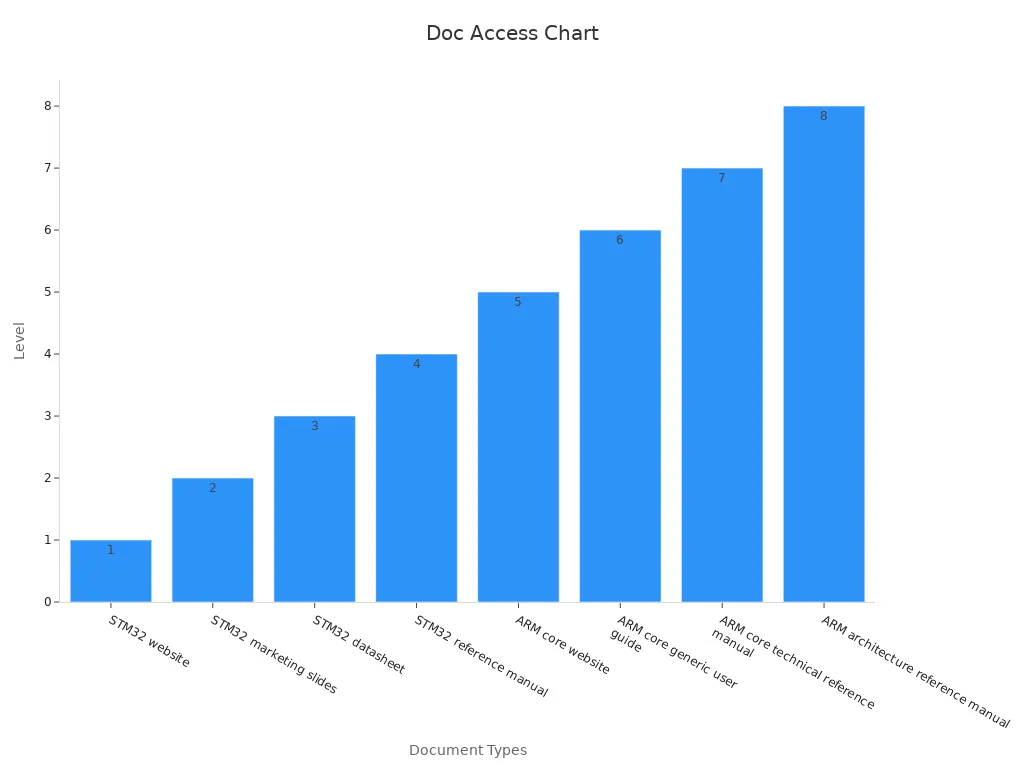
Explore additional STM32 resources, such as user manuals and application notes, to deepen your understanding of the microcontroller. These tools help you optimize its features for your projects. Bookmarking the STM32G071RBT6 product page ensures quick access to the latest updates and resources, saving you time and effort in the future.
FAQ
What is the STM32G071RBT6 microcontroller used for?
The STM32G071RBT6 microcontroller is ideal for embedded systems. It supports applications like industrial automation, consumer electronics, and IoT devices. Its low power consumption and advanced features make it suitable for energy-efficient designs.
Can I access STM32 datasheets without creating an account?
Yes, you can download STM32 datasheets directly from the STMicroelectronics website. No account is required. Simply navigate to the product page and locate the "Documentation" section.
How often should I check for updated datasheets?
You should check for updates whenever you start a new project or encounter issues. Updated datasheets often include bug fixes, new features, or revised specifications.
Are there tools to help with STM32 development?
Yes, STMicroelectronics offers tools like STM32Cube software packages. These tools simplify development by providing libraries, configuration utilities, and debugging support.
Can I use STM32G071RBT6 with other STM32 devices?
Yes, STM32 devices are designed for compatibility within their series. You can integrate STM32G071RBT6 with other STM32 microcontrollers for complex systems.
Specifications
- TypeParameter
- Factory Lead Time10 Weeks
- Mounting Type
The "Mounting Type" in electronic components refers to the method used to attach or connect a component to a circuit board or other substrate, such as through-hole, surface-mount, or panel mount.
Surface Mount - Package / Case
refers to the protective housing that encases an electronic component, providing mechanical support, electrical connections, and thermal management.
64-LQFP - Surface Mount
having leads that are designed to be soldered on the side of a circuit board that the body of the component is mounted on.
YES - Data ConvertersA/D 19x12b; D/A 2x12b
- Number of I/Os60
- Operating Temperature
The operating temperature is the range of ambient temperature within which a power supply, or any other electrical equipment, operate in. This ranges from a minimum operating temperature, to a peak or maximum operating temperature, outside which, the power supply may fail.
-40°C~85°C TA - Packaging
Semiconductor package is a carrier / shell used to contain and cover one or more semiconductor components or integrated circuits. The material of the shell can be metal, plastic, glass or ceramic.
Tray - Series
In electronic components, the "Series" refers to a group of products that share similar characteristics, designs, or functionalities, often produced by the same manufacturer. These components within a series typically have common specifications but may vary in terms of voltage, power, or packaging to meet different application needs. The series name helps identify and differentiate between various product lines within a manufacturer's catalog.
STM32G0 - Part Status
Parts can have many statuses as they progress through the configuration, analysis, review, and approval stages.
Active - Moisture Sensitivity Level (MSL)
Moisture Sensitivity Level (MSL) is a standardized rating that indicates the susceptibility of electronic components, particularly semiconductors, to moisture-induced damage during storage and the soldering process, defining the allowable exposure time to ambient conditions before they require special handling or baking to prevent failures
3 (168 Hours) - Number of Terminations64
- Terminal Position
In electronic components, the term "Terminal Position" refers to the physical location of the connection points on the component where external electrical connections can be made. These connection points, known as terminals, are typically used to attach wires, leads, or other components to the main body of the electronic component. The terminal position is important for ensuring proper connectivity and functionality of the component within a circuit. It is often specified in technical datasheets or component specifications to help designers and engineers understand how to properly integrate the component into their circuit designs.
QUAD - Terminal Form
Occurring at or forming the end of a series, succession, or the like; closing; concluding.
GULL WING - Supply Voltage
Supply voltage refers to the electrical potential difference provided to an electronic component or circuit. It is crucial for the proper operation of devices, as it powers their functions and determines performance characteristics. The supply voltage must be within specified limits to ensure reliability and prevent damage to components. Different electronic devices have specific supply voltage requirements, which can vary widely depending on their design and intended application.
3V - Terminal Pitch
The center distance from one pole to the next.
0.5mm - Base Part Number
The "Base Part Number" (BPN) in electronic components serves a similar purpose to the "Base Product Number." It refers to the primary identifier for a component that captures the essential characteristics shared by a group of similar components. The BPN provides a fundamental way to reference a family or series of components without specifying all the variations and specific details.
STM32G071 - Supply Voltage-Max (Vsup)
The parameter "Supply Voltage-Max (Vsup)" in electronic components refers to the maximum voltage that can be safely applied to the component without causing damage. It is an important specification to consider when designing or using electronic circuits to ensure the component operates within its safe operating limits. Exceeding the maximum supply voltage can lead to overheating, component failure, or even permanent damage. It is crucial to adhere to the specified maximum supply voltage to ensure the reliable and safe operation of the electronic component.
3.6V - Supply Voltage-Min (Vsup)
The parameter "Supply Voltage-Min (Vsup)" in electronic components refers to the minimum voltage level required for the component to operate within its specified performance range. This parameter indicates the lowest voltage that can be safely applied to the component without risking damage or malfunction. It is crucial to ensure that the supply voltage provided to the component meets or exceeds this minimum value to ensure proper functionality and reliability. Failure to adhere to the specified minimum supply voltage may result in erratic behavior, reduced performance, or even permanent damage to the component.
1.7V - Oscillator Type
Wien Bridge Oscillator; RC Phase Shift Oscillator; Hartley Oscillator; Voltage Controlled Oscillator; Colpitts Oscillator; Clapp Oscillators; Crystal Oscillators; Armstrong Oscillator.
Internal - Speed
In electronic components, "Speed" typically refers to the rate at which data can be processed or transferred within the component. It is a measure of how quickly the component can perform its functions, such as executing instructions or transmitting signals. Speed is often specified in terms of frequency, such as clock speed in processors or data transfer rate in memory modules. Higher speed components can perform tasks more quickly, leading to improved overall performance in electronic devices. It is an important parameter to consider when designing or selecting electronic components for specific applications.
64MHz - RAM Size
RAM size refers to the amount of random access memory (RAM) available in an electronic component, such as a computer or smartphone. RAM is a type of volatile memory that stores data and instructions that are actively being used by the device's processor. The RAM size is typically measured in gigabytes (GB) and determines how much data the device can store and access quickly for processing. A larger RAM size allows for smoother multitasking, faster loading times, and better overall performance of the electronic component. It is an important factor to consider when choosing a device, especially for tasks that require a lot of memory, such as gaming, video editing, or running multiple applications simultaneously.
36K x 8 - Voltage - Supply (Vcc/Vdd)
Voltage - Supply (Vcc/Vdd) is a key parameter in electronic components that specifies the voltage level required for the proper operation of the device. It represents the power supply voltage that needs to be provided to the component for it to function correctly. This parameter is crucial as supplying the component with the correct voltage ensures that it operates within its specified limits and performance characteristics. It is typically expressed in volts (V) and is an essential consideration when designing and using electronic circuits to prevent damage and ensure reliable operation.
1.71V~3.6V - uPs/uCs/Peripheral ICs Type
The parameter "uPs/uCs/Peripheral ICs Type" refers to the classification of various integrated circuits used in electronic devices. It encompasses microprocessors (uPs), microcontrollers (uCs), and peripheral integrated circuits that provide additional functionalities. This classification helps in identifying the specific type of chip used for processing tasks, controlling hardware, or interfacing with other components in a system. Understanding this parameter is essential for selecting the appropriate electronic components for a given application.
MICROCONTROLLER, RISC - Core Processor
The term "Core Processor" typically refers to the central processing unit (CPU) of a computer or electronic device. It is the primary component responsible for executing instructions, performing calculations, and managing data within the system. The core processor is often considered the brain of the device, as it controls the overall operation and functionality. It is crucial for determining the speed and performance capabilities of the device, as well as its ability to handle various tasks and applications efficiently. In modern devices, core processors can have multiple cores, allowing for parallel processing and improved multitasking capabilities.
ARM® Cortex®-M0+ - Peripherals
In the context of electronic components, "Peripherals" refer to devices or components that are connected to a main system or device to enhance its functionality or provide additional features. These peripherals can include input devices such as keyboards, mice, and touchscreens, as well as output devices like monitors, printers, and speakers. Other examples of peripherals include external storage devices, network adapters, and cameras. Essentially, peripherals are external devices that expand the capabilities of a main electronic system or device.
Brown-out Detect/Reset, DMA, I2S, POR, PWM, WDT - Clock Frequency
Clock frequency, also known as clock speed, refers to the rate at which a processor or electronic component can execute instructions. It is measured in hertz (Hz) and represents the number of cycles per second that the component can perform. A higher clock frequency typically indicates a faster processing speed and better performance. However, it is important to note that other factors such as architecture, efficiency, and workload also play a significant role in determining the overall performance of a component. In summary, clock frequency is a crucial parameter that influences the speed and efficiency of electronic components in processing data and executing tasks.
48MHz - Program Memory Type
Program memory typically refers to flash memory when it is used to hold the program (instructions). Program memory may also refer to a hard drive or solid state drive (SSD). Contrast with data memory.
FLASH - Core Size
Core size in electronic components refers to the physical dimensions of the core material used in devices such as inductors and transformers. The core size directly impacts the performance characteristics of the component, including its inductance, saturation current, and frequency response. A larger core size typically allows for higher power handling capabilities and lower core losses, while a smaller core size may result in a more compact design but with limitations on power handling and efficiency. Designers must carefully select the core size based on the specific requirements of the application to achieve optimal performance and efficiency.
32-Bit - Program Memory Size
Program Memory Size refers to the amount of memory available in an electronic component, such as a microcontroller or microprocessor, that is used to store program instructions. This memory is non-volatile, meaning that the data stored in it is retained even when the power is turned off. The program memory size determines the maximum amount of code that can be stored and executed by the electronic component. It is an important parameter to consider when selecting a component for a specific application, as insufficient program memory size may limit the functionality or performance of the device.
128KB 128K x 8 - Connectivity
In electronic components, "Connectivity" refers to the ability of a component to establish and maintain connections with other components or devices within a circuit. It is a crucial parameter that determines how easily signals can be transmitted between different parts of a circuit. Connectivity can be influenced by factors such as the number of input and output ports, the type of connectors used, and the overall design of the component. Components with good connectivity are essential for ensuring reliable and efficient operation of electronic systems.
HDMI-CEC, I2C, IrDA, LINbus, SPI, UART/USART, USB - Bit Size
In electronic components, "Bit Size" refers to the number of bits that can be processed or stored by a particular component. A bit is the smallest unit of data in computing and can have a value of either 0 or 1. The Bit Size parameter is commonly used to describe the capacity or performance of components such as microprocessors, memory modules, and data buses. A larger Bit Size generally indicates a higher processing capability or storage capacity, allowing for more complex operations and larger amounts of data to be handled efficiently. It is an important specification to consider when selecting electronic components for specific applications that require certain levels of performance and data processing capabilities.
32 - Has ADC
Has ADC refers to the presence of an Analog-to-Digital Converter (ADC) in an electronic component. An ADC is a crucial component in many electronic devices as it converts analog signals, such as voltage or current, into digital data that can be processed by a digital system. Having an ADC allows the electronic component to interface with analog signals and convert them into a format that can be manipulated and analyzed digitally. This parameter is important for applications where analog signals need to be converted into digital form for further processing or control.
YES - DMA Channels
DMA (Direct Memory Access) Channels are a feature found in electronic components such as microcontrollers, microprocessors, and peripheral devices. DMA Channels allow data to be transferred directly between peripherals and memory without involving the CPU, thereby reducing the burden on the CPU and improving overall system performance. Each DMA Channel is typically assigned to a specific peripheral device or memory region, enabling efficient data transfer operations. The number of DMA Channels available in a system determines the concurrent data transfer capabilities and can vary depending on the specific hardware design. Overall, DMA Channels play a crucial role in optimizing data transfer efficiency and system performance in electronic devices.
YES - PWM Channels
PWM Channels, or Pulse Width Modulation Channels, refer to the number of independent PWM outputs available in an electronic component, such as a microcontroller or a motor driver. PWM is a technique used to generate analog-like signals by varying the duty cycle of a square wave signal. Each PWM channel can control the output of a specific device or component by adjusting the pulse width of the signal. Having multiple PWM channels allows for precise control of multiple devices simultaneously, making it a valuable feature in applications such as motor control, LED dimming, and audio signal generation. The number of PWM channels available in a component determines the flexibility and complexity of the system it can control.
YES - Length10mm
- Width10mm
Datasheet PDF
- Datasheets :
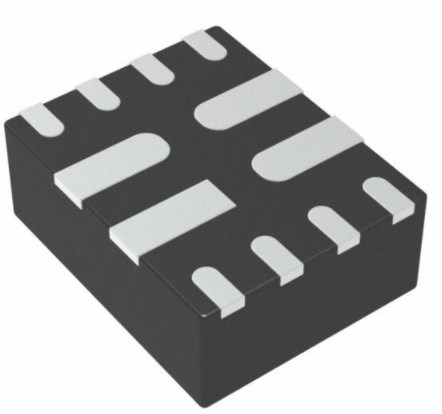 TPS2121RUXR Power Multiplexers: 12-VFQFN, Pinout, Datasheet
TPS2121RUXR Power Multiplexers: 12-VFQFN, Pinout, Datasheet07 March 20222947
 A Comprehensive Guide to LTC693CN#PBF - Simple Reset/Power-On Reset Supervisor
A Comprehensive Guide to LTC693CN#PBF - Simple Reset/Power-On Reset Supervisor22 May 2024243
 OP237EJ Operational Amplifier
OP237EJ Operational Amplifier06 March 2024426
 1N4007 Rectifier Diode: Pinout, Datasheet, and Applications
1N4007 Rectifier Diode: Pinout, Datasheet, and Applications30 July 202135994
 A Deep Dive into LTC6909CMS#TRPBF Programmable Timer and Oscillator
A Deep Dive into LTC6909CMS#TRPBF Programmable Timer and Oscillator06 March 2024285
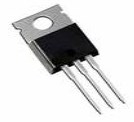 IRF1405 Power MOSFET: Pinout, Price and Datasheet
IRF1405 Power MOSFET: Pinout, Price and Datasheet10 September 20212489
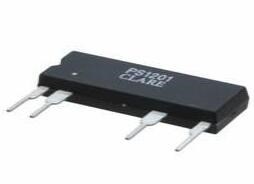 PS1201 AC Power Switch:Pinout, Application and Datasheet
PS1201 AC Power Switch:Pinout, Application and Datasheet04 August 20211153
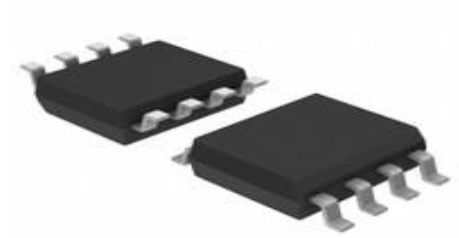 TPS54232DR: MOSFET, Pinout, Datasheet
TPS54232DR: MOSFET, Pinout, Datasheet22 February 2022806
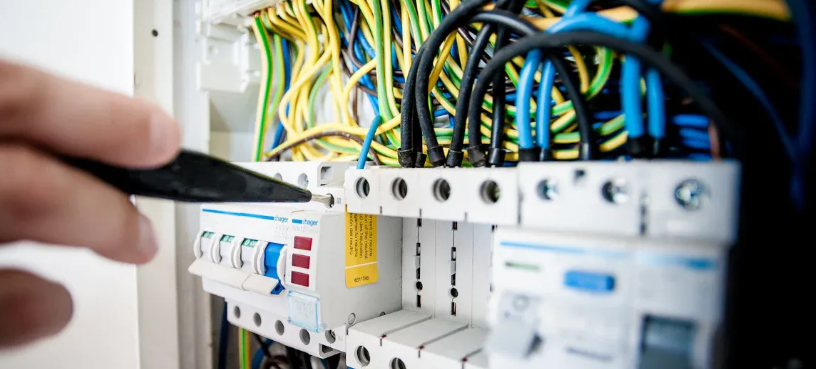 Best Practices for Panel Meter Maintenance
Best Practices for Panel Meter Maintenance11 July 2025494
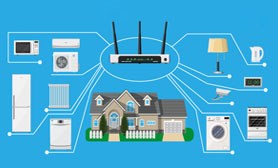 What is Power over Ethernet(PoE)?
What is Power over Ethernet(PoE)?01 December 20212437
 Understanding Power Management Units (PMUs)
Understanding Power Management Units (PMUs)06 June 2025474
 Protect USB Ports From Nefarious USB Killers
Protect USB Ports From Nefarious USB Killers15 November 20191531
 A Complete Guide to 2025 Battery vs 2032 Swapping
A Complete Guide to 2025 Battery vs 2032 Swapping29 August 2025661
 What is a SAW Sensor? Types, Working and Applications
What is a SAW Sensor? Types, Working and Applications29 March 202118279
 Introduction to the Types of IoT Sensors
Introduction to the Types of IoT Sensors21 July 20201437
 What are Types and Application of Gas Sensors?
What are Types and Application of Gas Sensors?18 November 20259481
STMicroelectronics
In Stock: 6000
United States
China
Canada
Japan
Russia
Germany
United Kingdom
Singapore
Italy
Hong Kong(China)
Taiwan(China)
France
Korea
Mexico
Netherlands
Malaysia
Austria
Spain
Switzerland
Poland
Thailand
Vietnam
India
United Arab Emirates
Afghanistan
Åland Islands
Albania
Algeria
American Samoa
Andorra
Angola
Anguilla
Antigua & Barbuda
Argentina
Armenia
Aruba
Australia
Azerbaijan
Bahamas
Bahrain
Bangladesh
Barbados
Belarus
Belgium
Belize
Benin
Bermuda
Bhutan
Bolivia
Bonaire, Sint Eustatius and Saba
Bosnia & Herzegovina
Botswana
Brazil
British Indian Ocean Territory
British Virgin Islands
Brunei
Bulgaria
Burkina Faso
Burundi
Cabo Verde
Cambodia
Cameroon
Cayman Islands
Central African Republic
Chad
Chile
Christmas Island
Cocos (Keeling) Islands
Colombia
Comoros
Congo
Congo (DRC)
Cook Islands
Costa Rica
Côte d’Ivoire
Croatia
Cuba
Curaçao
Cyprus
Czechia
Denmark
Djibouti
Dominica
Dominican Republic
Ecuador
Egypt
El Salvador
Equatorial Guinea
Eritrea
Estonia
Eswatini
Ethiopia
Falkland Islands
Faroe Islands
Fiji
Finland
French Guiana
French Polynesia
Gabon
Gambia
Georgia
Ghana
Gibraltar
Greece
Greenland
Grenada
Guadeloupe
Guam
Guatemala
Guernsey
Guinea
Guinea-Bissau
Guyana
Haiti
Honduras
Hungary
Iceland
Indonesia
Iran
Iraq
Ireland
Isle of Man
Israel
Jamaica
Jersey
Jordan
Kazakhstan
Kenya
Kiribati
Kosovo
Kuwait
Kyrgyzstan
Laos
Latvia
Lebanon
Lesotho
Liberia
Libya
Liechtenstein
Lithuania
Luxembourg
Macao(China)
Madagascar
Malawi
Maldives
Mali
Malta
Marshall Islands
Martinique
Mauritania
Mauritius
Mayotte
Micronesia
Moldova
Monaco
Mongolia
Montenegro
Montserrat
Morocco
Mozambique
Myanmar
Namibia
Nauru
Nepal
New Caledonia
New Zealand
Nicaragua
Niger
Nigeria
Niue
Norfolk Island
North Korea
North Macedonia
Northern Mariana Islands
Norway
Oman
Pakistan
Palau
Palestinian Authority
Panama
Papua New Guinea
Paraguay
Peru
Philippines
Pitcairn Islands
Portugal
Puerto Rico
Qatar
Réunion
Romania
Rwanda
Samoa
San Marino
São Tomé & Príncipe
Saudi Arabia
Senegal
Serbia
Seychelles
Sierra Leone
Sint Maarten
Slovakia
Slovenia
Solomon Islands
Somalia
South Africa
South Sudan
Sri Lanka
St Helena, Ascension, Tristan da Cunha
St. Barthélemy
St. Kitts & Nevis
St. Lucia
St. Martin
St. Pierre & Miquelon
St. Vincent & Grenadines
Sudan
Suriname
Svalbard & Jan Mayen
Sweden
Syria
Tajikistan
Tanzania
Timor-Leste
Togo
Tokelau
Tonga
Trinidad & Tobago
Tunisia
Turkey
Turkmenistan
Turks & Caicos Islands
Tuvalu
U.S. Outlying Islands
U.S. Virgin Islands
Uganda
Ukraine
Uruguay
Uzbekistan
Vanuatu
Vatican City
Venezuela
Wallis & Futuna
Yemen
Zambia
Zimbabwe







